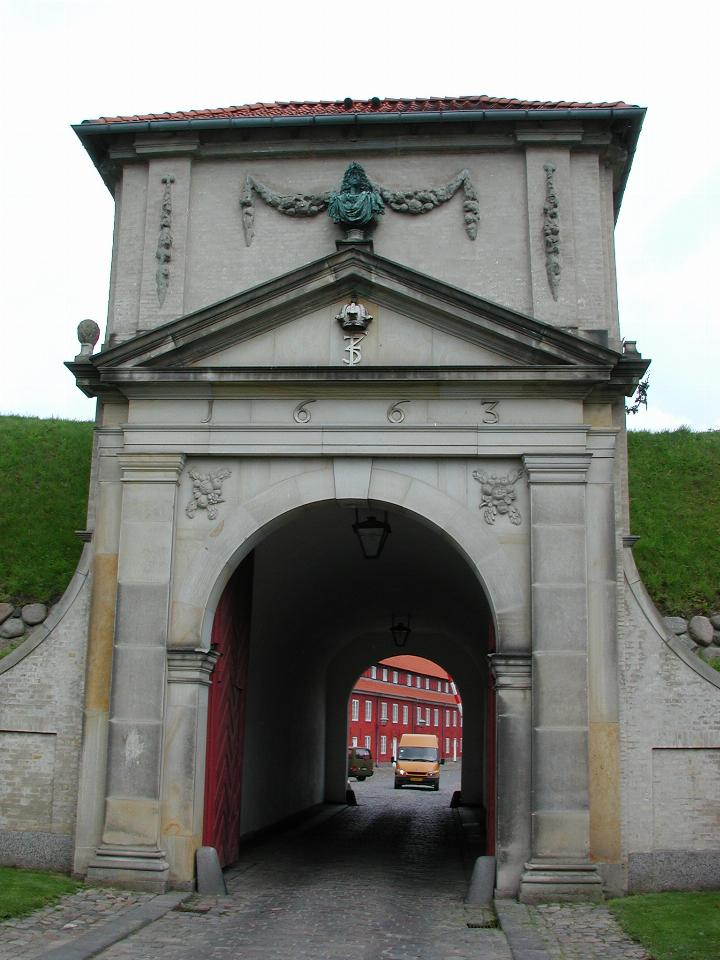
The Kastellet, or Citadel, was built in the aftermath of the Swedish seige of the city on Febraury 10th, 1659. The double moats (there's only one continuous one now) were among the improvements made to the city's defences. It remained the city's main fortress into the 18th century. In a grim reversal, it was German headquarters during the German occupation of World War II.

The western entrance. Note the date of 1663. Also visible through the arch are some of the barracks.
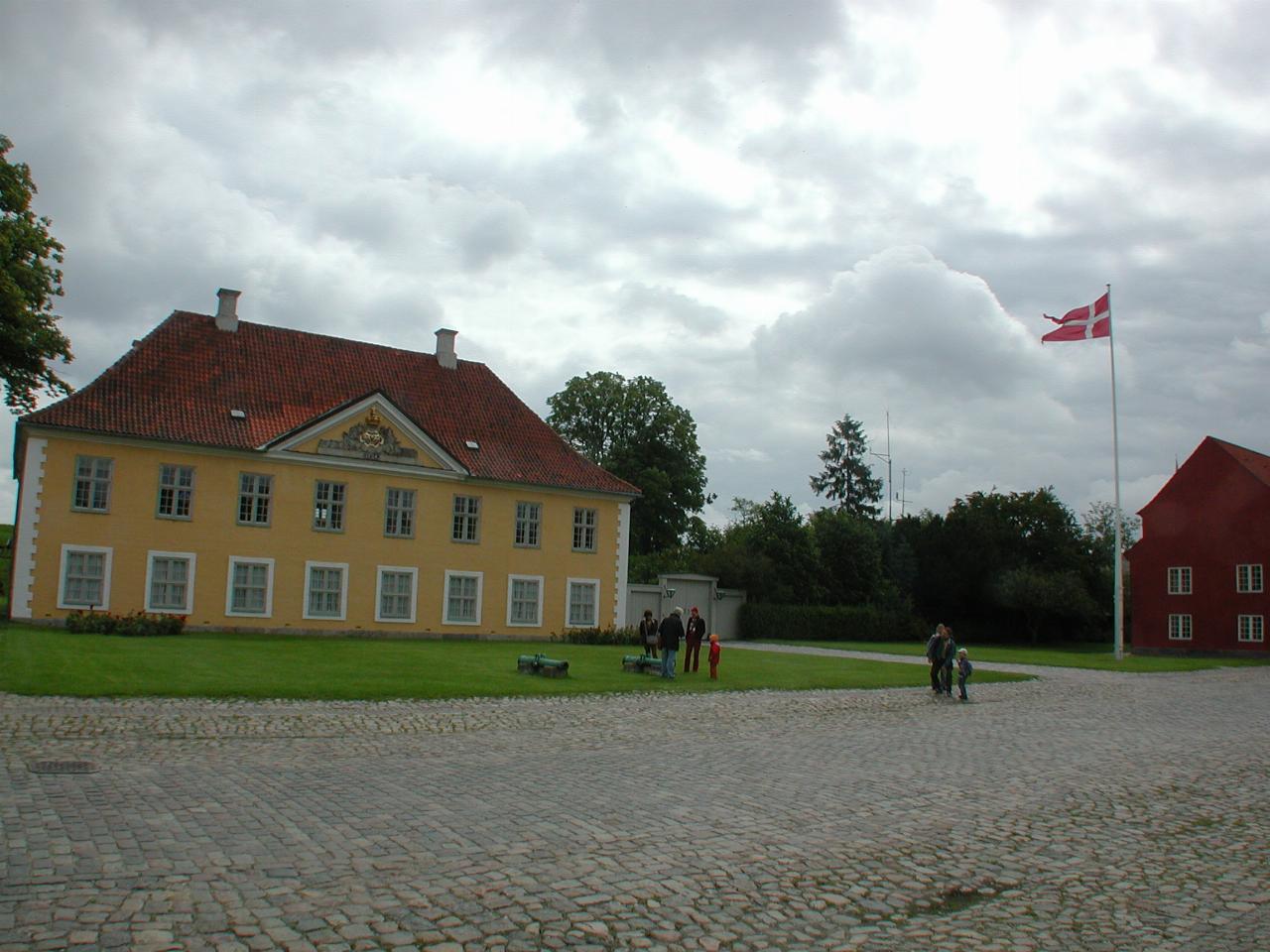
What might be called the "town square". Behind me was a parade ground in front of the Citadel's church.
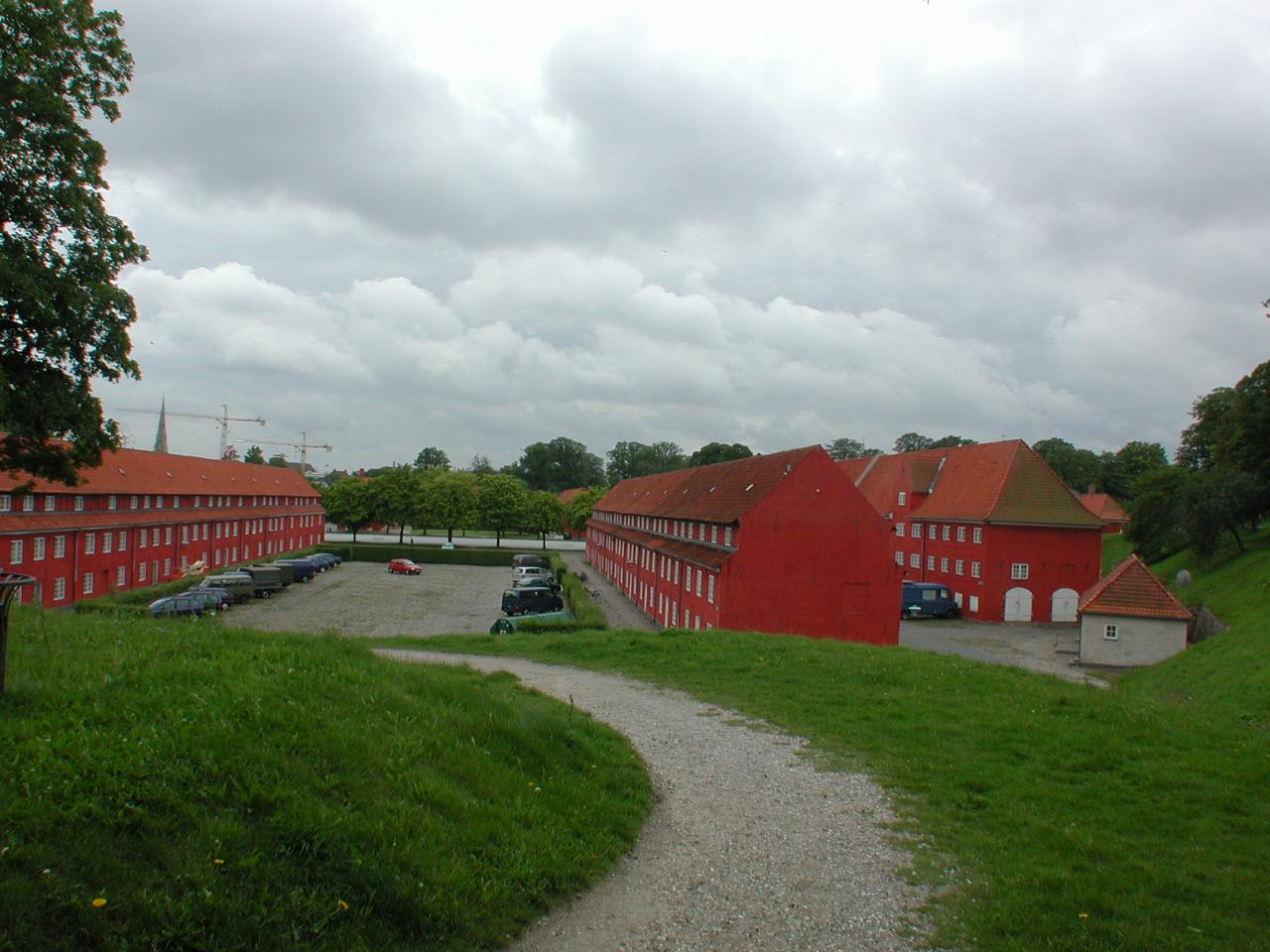
A view of the barracks.. The trees on the far side of them surround the parade area in front of the church.

A view from the eastern side ramparts, looking over the moat and towards the industrial area across the harbour, including the wind generators.

The eastern gatehouse, showing the scale of the ramparts and moat.
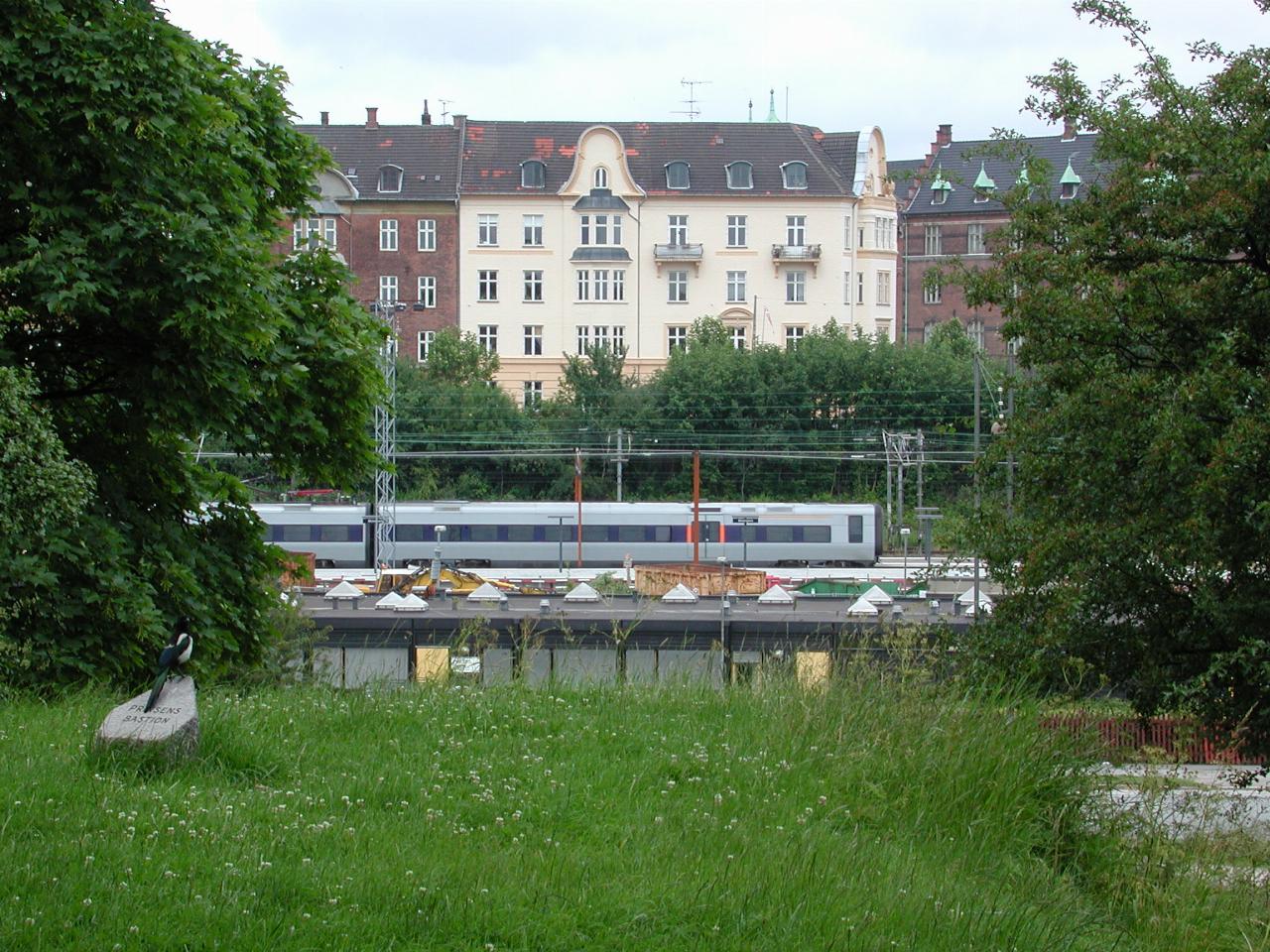
One of the nice looking trains passing the ramparts.
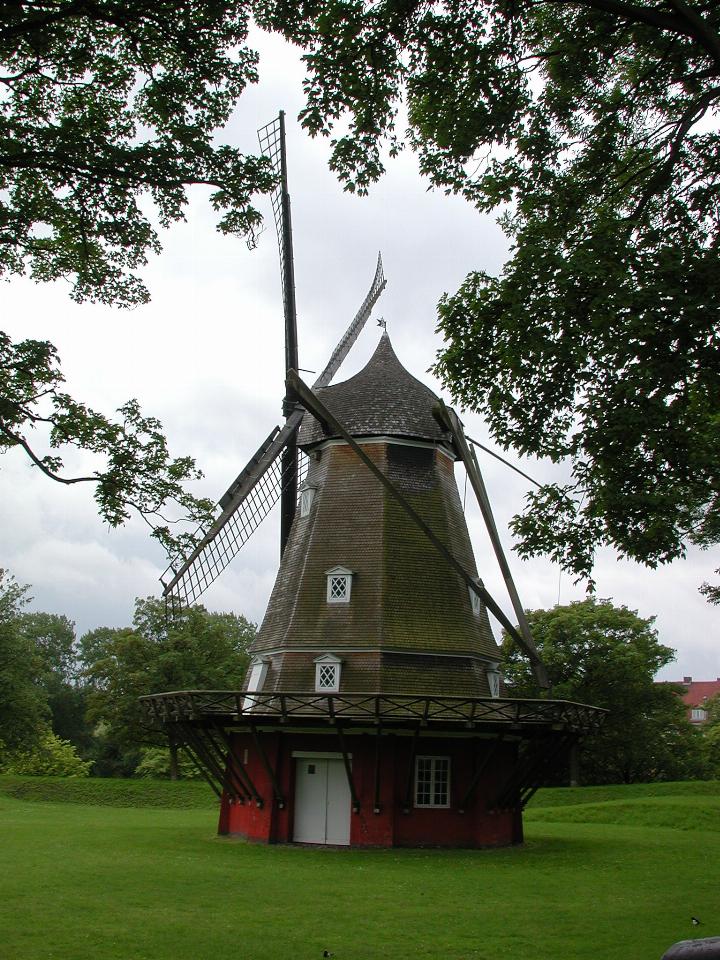
I don't know if the windmill was for drainage, or for crushing grain. It's located just below the ramparts, and quite a bit above the main level.